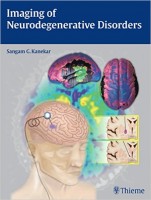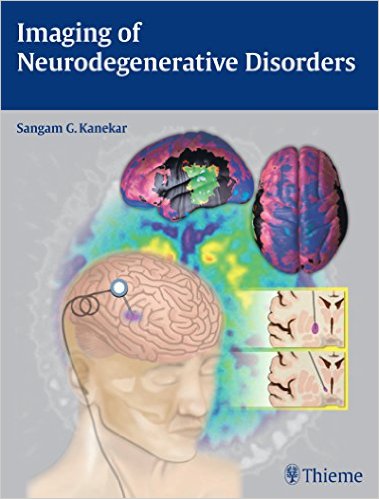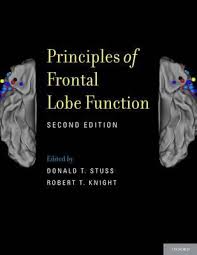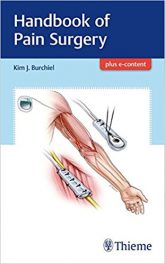 Editor: Sangam G. Kanekar, MD
Editor: Sangam G. Kanekar, MD
Publisher: Thieme – 397 pages
Book Review by: Nano Khilnani
Dementia is the most common form of neurodegenerative disorders. Dementia is not a normal part of ageing. It is a syndrome of a chronic or progressive nature in which there is deterioration in memory, thinking, and behavior; a slowing down in movement, and the ability to perform daily activities, according to a March 2015 article on the World Health Organization website.
Dementia is caused by a variety of diseases and injuries that primarily or secondarily affect the brain, such as Alzheimer’s disease or stroke. It is estimated that Alzheimer’s is the most common cause and may contribute to up to 70 percent of dementia cases.
About 47.5 million people worldwide have dementia, and for those who live in underdeveloped and developing countries where access to health care is lacking or inadequate, the prospects are bleak for dementia sufferers and their family members. And the statistic – that every year, there are 7.7 million new cases, according to the WHO article – makes this situation worse.
Currently there is no cure for this disease. At that rate, in just 15 years, by the year 2030, if a cure hasn’t been found (e.g. if a drug is not developed) there will be 163 million people with dementia (47.5 million existing, plus 115.5 million new cases).
The good news (and this is debatable depending on whether you think the glass is half full or half empty) is that only five to eight percent of people over the age of 60 have dementia, but the percentage goes to much higher levels for people as they age.
Dementia is caused by a variety of diseases and injuries that primarily or secondarily affect the brain, such as Alzheimer’s disease or stroke. It is estimated that Alzheimer’s is the most common cause and may contribute to up to 70 percent of dementia cases.
In his Preface, the editor Dr. Sangam Kanekar writes that in 2010 there were 36.5 million people all over the globe diagnosed with dementia, and as quickly as every four seconds, a new case of dementia is diagnosed. The increase in the population of elderly people has resulted in the corresponding increase in cases of people with dementia and other neurodegenerative diseases and disorders.
All this is bad news, but the good news is that at least in the developed world including the United States and Europe, imaging of neurodegenerative diseases and disorders has greatly improved. Dr. Kanekar writes:
“In recent years, numerous new developments have occurred in neuroimaging. Besides improvement in structural imaging with thinner sections, 3D volume, and higher-resolution imaging, molecular and cellular imaging have made a big impact on how we look at the brain and its function. (Imaging modalities such as) MR spectroscopy, DTI, perfusion imaging, fMRI and PET scans have further increased our understanding of the pathological processes of the brain, and neurodegenerative diseases in particular.”
This book covers both the ‘how’ and the ‘what’: how to diagnose and detect various neurological (particularly degenerative) diseases and disorders, as well as what they are, what are the differences among them, the clinical approaches, and the treatment options, including advances in the treatment of the major disease: dementia.
Seventy-seven doctors including the editor and others with expertise in various areas, from the United States and 10 other countries – Austria, Brazil, Canada, France, Germany, India, Italy, Japan, Qatar, the United Kingdom – wrote the 41 chapters of this book.
These individuals are professors at universities and practitioners at medical centers primarily in neurology and radiology, but some also work in the fields of clinical spectroscopy, general medical imaging, laboratory medicine, neurobiological research, neuroradiology, neurosurgery, pathology, and other areas.
The chapters in this large book are organized around 16 Parts, which we name for you below to give you a sort of summary of topics you will find covered in this book:
- Introduction
- Imaging Techniques
- Normal Aging
- Alzheimer’s Disease
- Non-Alzheimer’s Cortical Dementia
- Dementia with Extrapyramidal Syndromes
- Vascular Dementia
- Infection and Inflammatory Conditions Associated with Dementia
- Normal Pressure Hydrocephalus
- Tumor-Related Cognitive Function
- Trauma
- Endocrine and Toxins-Related Dementia
- Inborn Errors of Metabolism
- Cerebellar Degeneration and Dysfunction
- Motor Neuron Disorders
- Clinical Approach and Treatment
This is an excellent book on neurodegenerative disorders, with detailed textual discussions of clinical features, pathologies, and other aspects, accompanied by numerous visual graphics, through a large variety of effective imaging techniques accompanied by clear photo captions. You will find that all the information on the topics we have listed above is presented very systematically and consistently in well-organized formats in all chapters.
Editor: Sangam G. Kanekar, MD is Associate Professor of Radiology and Neurology in the Milton S. Hershey Medical College at Penn State University College of Medicine in Hershey, Pennsylvania.







